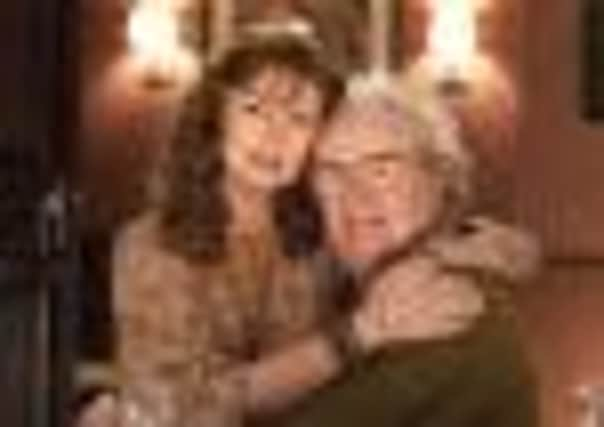Film review: Cloud Atlas


If any of these are on your must-see list, then there’s nothing I can do to dissuade you from booking a ticket to Cloud Atlas, an enormously ambitious movie co-adapted and directed by Tom Twyker, Andy and Lana Wachowski.
Over three hours, the film cross-cuts between six stories. In 1846, Jim Sturgess witnesses the realities of slavery in Polynesia, then is deliberately fed poison by Hanks on his voyage home. In 1936, Ben Whishaw’s promising young composer abandons a love affair with James D’Arcy in order to collaborate with an elderly classical composer (Jim Broadbent). In 1973 Halle Berry uncovers that Hugh Grant is concealing a potential nuclear disaster, and in present-day Britain Jim Broadbent is imprisoned in a nursing home. There are also futuristic projections: in 22nd century Seoul, a cloned waitress becomes aware of her second-class status, and way, way past Armageddon Tom Hanks is one of the few remaining humans, reduced to fighting off cannibals.
Advertisement
Hide AdThese stories don’t all work, and it’s significant that the weakest ones are the Wachowski strands. Twyker’s squib about Broadbent trying to escape from a nursing home run by Hugo Weaving in a dress is a bit slapsticky, but at least it’s an opportunity for the film to lighten up. On the other hand Tom Hanks as a new age caveman, who urging an alien Halle Berry to tell him “the true true” (real truth) feels like something that will haunt Hanks’ film cv the way King David’s nappy haunts Richard Gere.
Like David Mitchell’s book, the central theme is the interconnection of human experience, so some elements recur in every strand – oppression, compassion, a scar like a comet, and rubbery noses. Sometimes the stories overlap in more concrete ways; in 1936, Whishaw reads Sturgess’ south sea memoirs. In 1973, Berry admires Whishaw’s composition, The Cloud Atlas sextet. However the Wachowskis and Twyker have opted for an even more obvious device to lasso the stories: getting the actors to play multiple roles, in each story, using lashing of prosthetics.
This must have sounded great at some point, but it’s really terrible to watch. Sometimes it merely gives the impression that there was a really good sale at a rubber nose factory. Other times, it’s far more distracting, especially when they cross ethnic lines. Fashioned to appear Asian, Jim Sturgess suggests Mark Wahlberg with conjunctivitis. Does it matter? I’m afraid it does, because when you realise that a futuristic Asian male surgeon is Halle Berry, or that Hugh Grant has been aged up to the point that he resembles Doctor Who’s billion year old chum, the Face of Boe, you aren’t watching a film; you are playing a prosthetic game of Where’s Wally.
There are other diversions for Scots; in the 1970s section, Halle Berry rushes around near George Square, never quite discovering that Queen Street Station is around the corner. And in the nursing home section, there’s a pub scene that appears to pay tribute to the idea of Scottish football fans as self-appointed dispensers of fist-centric justice.
Cloud Atlas is the film equivalent of sixth form poetry - earnest, and sometimes inventive, but more often pretentious and sanctimonious.
If a filmmaker really loves philosophy and language, then they’d never allow zen bloat like “To see is to perceive and so to know thyself is only possible through the eyes of others” out in public, let alone parade it as a precious insight.
On general release from Friday
Twitter: @SiobhanSynnot